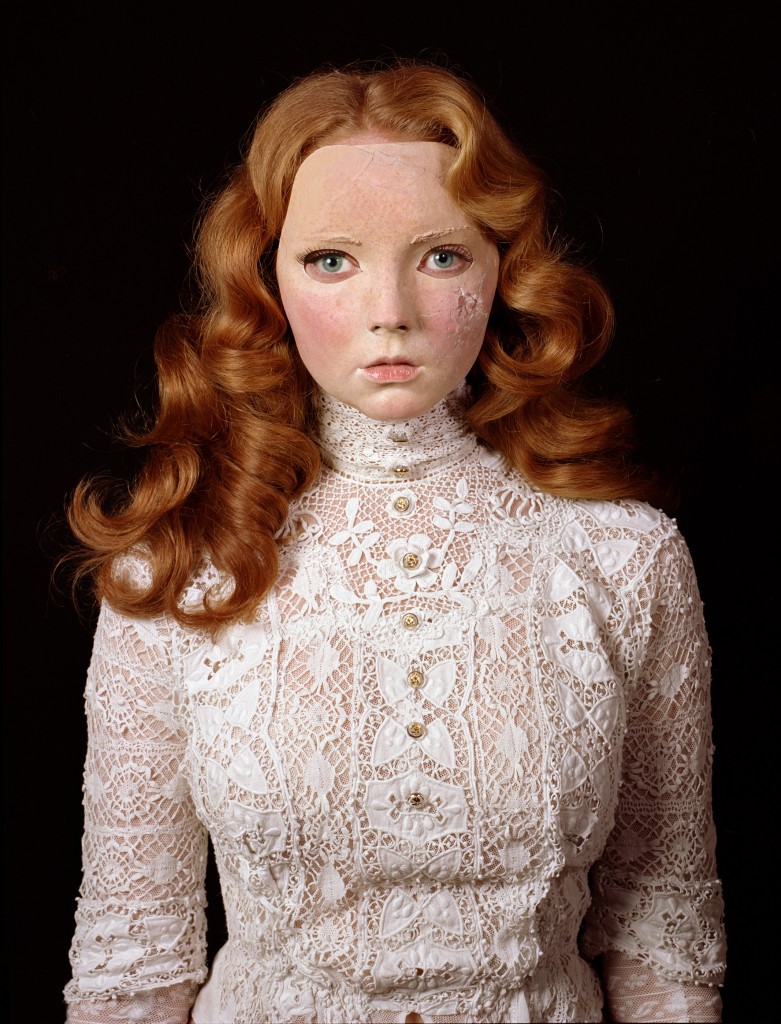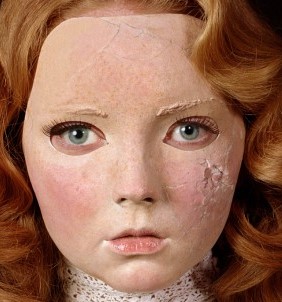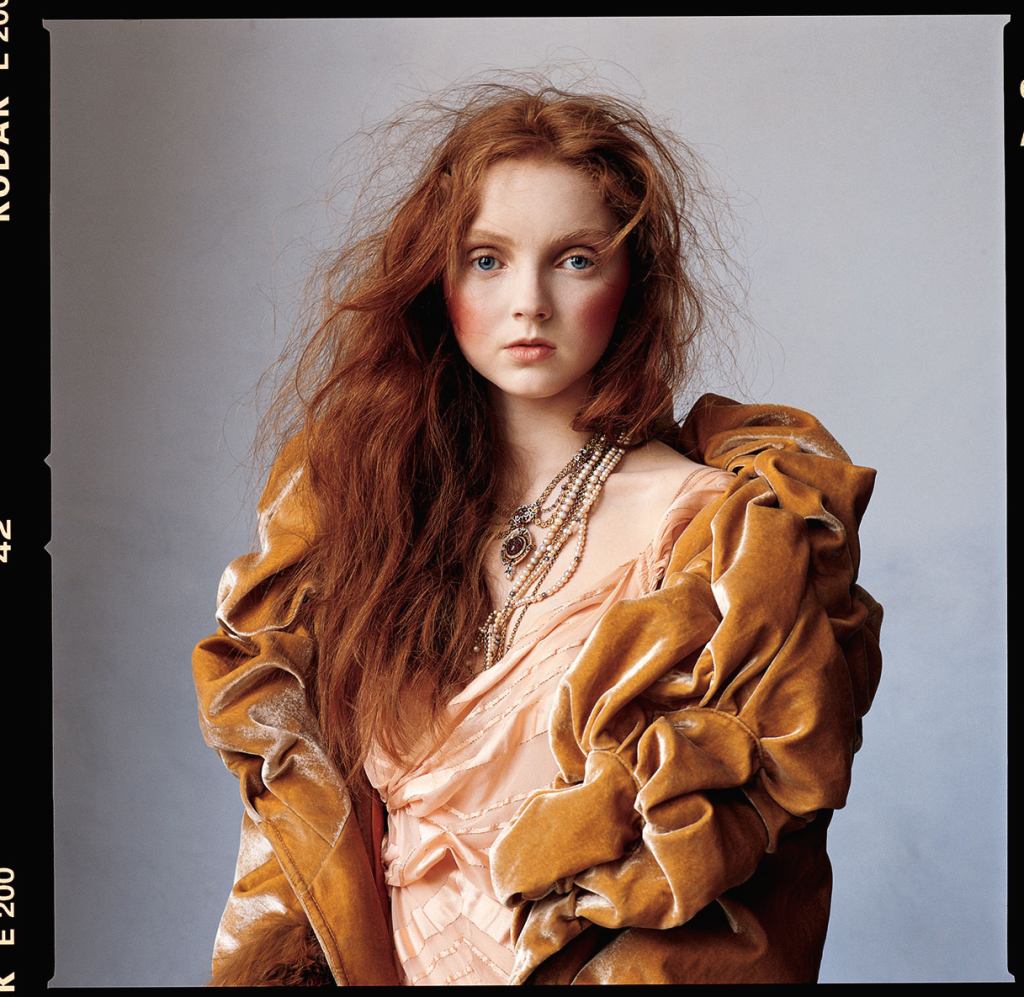
In this chilling photograph, British conceptual artist Gillian Wearing (b. 1963) transforms supermodel Lily Cole into something that resembles a haunted antique doll. What is it that makes this image so damn unsettling?
Is it the way her glassy blue eyes gaze out behind lifeless porcelain skin, as if they are staring straight into your soul? Or is it the fussy Victorian lace blouse creeps up her neck, so prim and strangling? Or the way that damaged face speaks of some unseen violence — of innocence being shattered?
Behind the mask
Gillian Wearing rose to prominence in the 1990s as part of the YBAs (Young British Artists), winning the prestigious Turner Prize in 1997. Masks are used throughout Wearing’s body of work, as a subversive device to explore personal trauma and identity.
Wearing created this image by making 8-10 plaster casts of Lily Cole’s face, requiring Cole to hold her facial expression for hours at a time. With help from a small team of sculptors and painters, the artist then created a series of silicone Lily Cole masks painted to capture her likeness. In the end, Wearing selected a mask with damage on the cheek and forehead, then photographed Cole wearing a disfigured copy of her own face.

Although the mask achieves a striking similarity to Cole’s real face, silicone doesn’t absorb light the same way as real skin, making it feel eerily unnatural. But, beyond that, there is just something so disturbing about the act of wearing your own face as a mask — it sounds like something that only a maniac in a horror movie would do.
Strangely familiar
In the early 2000s, Cole became one of the world’s most famous and sought-after supermodels — the youngest ever to appear on the cover of Vogue. Because of her fame, Cole’s distinctive face feels ultra-familiar and ultra-public.
So, if you needed to hide from the public’s hungry gaze, do you think wearing a mask of your own face would be the best or the worst disguise ever?

Wearing takes the beautiful face we are accustomed to, and makes it feel warped and melted in our mind. The face feels strangely familiar and unfamiliar at the same time, like Cole’s own doppelganger has swallowed her whole. Freud call this unsettling sensation the uncanny, to explain why we find dolls or waxwork figures so eerie.
Damaged doll or beautiful psycho?
The uncanny, however, is only part of the story here — Wearing adds another layer of strangeness to this photograph by adding that subtle damage to Cole’s skin.
On one hand, the facial damage makes her seem more vulnerable and fragile. Cole is often praised for her delicate, doll-like features and timeless beauty. Wearing shows us the dark side of that, by making Cole look like an antique porcelain doll that has been badly mistreated. As a doll, Cole is a ghoulish plaything to be possessed, a breakable object vulnerable to the whims of her psychopath owner.

And yet, I see something menacing in her too. To me, her cold stare makes her look like a pampered housecat who has just emerged victorious from a vicious fight with the neighbourhood stray. Slightly bewildered, yet steely and ruthless. Is she actually the psychopath here, holding a bloody hatchet just out of the picture frame like a very beautiful Lizzie Borden?
So what do you see?
If this photograph was totally grotesque, it wouldn’t work. Wearing’s image is deeply unsettling, but it is still *almost* beautiful in a haunting way. This is the magic in-between space where Wearing’s work thrives.
I think that any ridiculously interesting image leaves just enough room for the viewer to project their own bizarre-o imaginations onto it. They tell us about ourselves, and give us a glimpse into our own weird brains.
So what ghost stories, absurd inspiration or strange emotions does Wearing’s photograph spark for you? Please please share them with me in the comments, or on Instagram or Facebook (I’m not much of a Twitter person, but you can also get me there too). I want to see what curious doors this image opens up in your spooky head!
